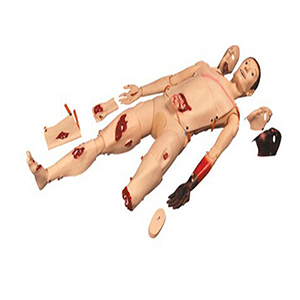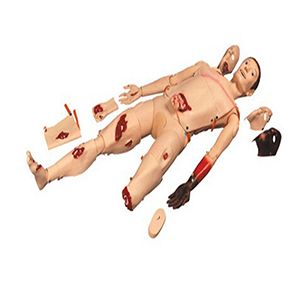In medical education, the transition between theoretical knowledge and practical practice is often one of the biggest challenges for students. Especially in the field of trauma medicine, the training of first aid skills is very important for the clinical judgment and operation ability of the trainees. As a highly simulated simulation tool, advanced trauma model can effectively accelerate the transformation of students from theoretical learning to practical application, and improve their emergency handling ability and clinical response speed.

Disconnect between theory and practice
The nature of theoretical learning is abstract, and students often understand the physiological mechanism, treatment methods and emergency treatment process of trauma through books, lectures and other ways. However, the real clinical situation is full of uncertainty and complexity, and the disconnection between the on-site environment of trauma and classroom learning makes students often lack sufficient emergency management experience. In trauma medicine in particular, the combination of theory and practice is particularly important, as trainees not only need to understand the nature of the injury, but must also perform first aid quickly and accurately.
The role of advanced trauma models
By providing an environment that simulates a trauma scene, the Advanced Trauma Model enables students to practice their trauma treatment skills in a near-real simulated environment. These models are often designed to have multiple trauma types and complex clinical responses, and can simulate the physiological responses of trauma patients (e.g., bleeding, shock, respiratory failure, etc.). Students can perform wound treatment, airway management, transfusion, hemostasis and other operations on the model, so that theoretical knowledge and practical operation are closely combined.
Data support
The study data showed that participants using the advanced trauma model were more comfortable coping with traumatic situations in an actual clinical setting. According to the statistical results of a number of first aid training, the clinical operation error rate of the trainees after training with the simulation model is significantly reduced. Some training institutions have found that after 10-20 hours of trauma simulation training, participants' clinical decision-making speed has increased by more than 30%, and operational accuracy has also been significantly improved.
Personal Growth and professional development
Advanced trauma model not only helps students to master the specific technical operation, but also helps to improve their psychological quality and clinical judgment ability. The accuracy of many first-aid skills depends on students' ability to cope in high-pressure situations, and simulation training can effectively help students respond quickly under "stress tests" and accumulate practical experience. This experience not only enhances self-confidence, but also enhances clinical acuity and the ability to respond quickly, especially when dealing with emergency trauma patients.
Conclusion
In summary, the advanced trauma model is undoubtedly an important tool to accelerate the transformation of students from theory to practice. It not only provides a platform for efficient and repetitive practice, allowing students to hone their skills in a simulated environment, but also improves their clinical emergency response ability through simulation training. With the gradual transformation of medical education model to practice-oriented, trauma model will play a more and more important role in the cultivation of students' clinical ability.

